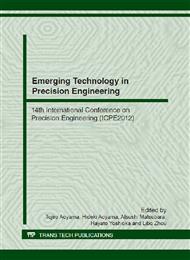p.907
p.913
p.919
p.925
p.932
p.939
p.945
p.951
p.957
Automatic Recognition of a Piping System from Laser Scanned Points by Eigenvalue Analysis
Abstract:
In recent years, changes in plant equipment have been becoming more frequent because of the short lifetime of the products, and constructing 3D shape models of existing plants (as-built models) from large-scale laser scanned data is expected to make their rebuilding processes more efficient. However, the laser scanned data of the existing plant has massive points, captures tangled objects and includes a large amount of noises, so that the manual reconstruction of a 3D model is very time-consuming and costs a lot. Piping systems especially, account for the greatest proportion of plant equipment. Therefore, the purpose of this research was to propose an algorithm which can automatically recognize a piping system from terrestrial laser scan data of the plant equipment. Point clouds of a piping system can be extracted based eigenvalue analysis and using region-growing from the laser scanned points. Eigenvalue analysis of the point clouds then allows for recognition of straight portion of pipes. Connecting parts can be recognized from connection relationship between pipes and neighboring points.
Info:
Periodical:
Pages:
932-938
Citation:
Online since:
November 2012
Authors:
Price:
Сopyright:
© 2012 Trans Tech Publications Ltd. All Rights Reserved
Share:
Citation:


